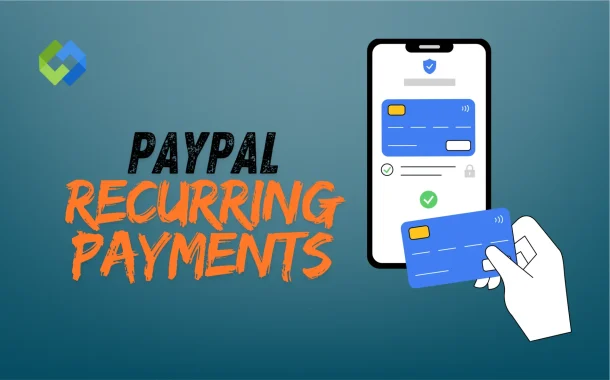PayPal makes recurring payments simple and safe. It supports many currencies and works in most countries. Businesses can set up subscription plans quickly. Customers trust PayPal, so they feel secure using it. It also sends email alerts when a payment is made or due.
Table of Contents
Table of Contents
Benefits of Using Recurring Payments
- Saves Time: Recurring payments happen automatically after setup. Businesses don’t need to send invoices every month. Customers don’t have to log in and pay manually. This saves time and reduces daily tasks.
- Ensures Timely Payments: Payments are processed on a fixed schedule. Businesses get paid on time without chasing customers. This reduces late payments and improves cash handling.
- Provides Steady Cash Flow: With recurring payments, businesses can predict income. This helps with budgeting and future planning. A steady flow of money keeps operations running smoothly.
- Improves Customer Experience: Customers don’t need to worry about missing payments. They get continuous access to services like memberships or software. It makes the overall process stress-free.
- Builds Long-Term Relationships: Recurring payments create regular interactions. Customers stay longer and become loyal users. This builds trust and supports business growth over time.
How PayPal Recurring Payments Work
PayPal recurring payments work by setting up a subscription plan. A business creates this plan using PayPal’s tools and includes details like the price, billing cycle, and service name. Once the plan is ready, it’s shared with the customer through a button or link. The customer agrees to the terms and allows PayPal to take payments automatically from their account.
After the customer agrees, PayPal begins the billing cycle. Payments are charged on the set schedule, like monthly or yearly. The customer doesn’t need to approve each payment manually. PayPal handles everything in the background, making the process easy for both sides.
PayPal also sends email alerts to the customer before a payment is taken. This keeps them informed and avoids surprises. Customers can view or cancel their subscription anytime from their PayPal account. It’s a simple and clear system that builds trust.
On the business side, managing subscriptions is easy. You can check active plans, track payment history, and make changes from your PayPal dashboard. You can pause, update, or cancel subscriptions when needed. This makes PayPal a smart choice for handling repeat payments.
Setting Up PayPal Recurring Payments
Create a PayPal Business Account
To set up recurring payments, you need a PayPal Business account. If you don’t have one, you can create it on the PayPal website. After logging in, navigate to the “Subscriptions” or “Recurring Payments” section from the PayPal dashboard to get started.
Set Up a Subscription Plan
In this step, you’ll create a new subscription plan by entering the product or service name, setting the price, and defining the billing cycle. You can choose from different billing intervals such as monthly, yearly, or even weekly based on your business needs.
Customize the Payment Details
PayPal allows you to customize the subscription by adding a free trial period, setup fees, or even limiting the number of payments. This flexibility lets you offer promotions, customize the subscription to your business model, and adjust to different customer needs.
Generate Button or Link
Once your plan is created, PayPal generates a subscription button or link that you can embed on your website or share in emails. You can also customize the appearance of the button to match your branding. Customers can click this button to review and approve the recurring payment.
Start Automatic Billing
After the customer approves the payment, PayPal will automatically charge them on the agreed-upon schedule. Both the business and the customer receive email confirmations of each payment. PayPal manages the rest, ensuring timely and automatic billing without any manual effort.
Managing Recurring Payments
1. View Active Subscriptions
To manage recurring payments, go to the “Subscriptions” section in your PayPal dashboard. Here, you can see all active subscriptions, including details like payment amounts, billing cycles, and customer information.
2. Modify Subscription Plans
If you need to change the pricing, billing cycle, or subscription details, you can easily modify them from your dashboard. PayPal allows you to update plans without disrupting the customer’s service or experience.
3. Pause, Cancel, or Suspend Subscriptions
You can pause or cancel a subscription directly from the PayPal dashboard. If a customer requests a change or if there’s an issue with a payment, you can handle these adjustments with a few clicks. PayPal will notify both you and the customer when any changes occur.
4. Track Payments and Generate Reports
PayPal provides reporting tools that let you track payments and manage invoicing. These features help you monitor recurring payments, keep accurate records, and assess the performance of your subscription-based business.
Fees and Payment Terms
1. PayPal Transaction Fees
PayPal charges a standard fee for processing recurring payments, which is typically 2.9% + a fixed fee based on the currency received. The fixed fee varies by country but is generally around $0.30 per transaction in the U.S. These fees apply to each successful payment made through the recurring subscription.
2. Fees for High-Volume Businesses
For businesses with higher transaction volumes, PayPal offers discounted rates. If you process more than $3,000 per month, you may qualify for lower fees. It’s worth contacting PayPal for details on these volume-based discounts.
3. Automatic Fee Deduction
PayPal deducts its fees automatically from the payment amount. This means you won’t need to worry about manually calculating or paying the fees. You receive the remaining balance after the fee is deducted from each subscription payment.
4. Currency and International Fees
For transactions in foreign currencies or international payments, additional fees may apply. PayPal charges an additional 1.5% for currency conversion, which businesses should consider when setting prices for global customers.
5. Payment Terms
The terms for recurring payments, including billing cycles and due dates, are determined during the subscription setup process. Payments are automatically charged as per the agreed schedule. Both businesses and customers can manage or cancel subscriptions at any time.
Conclusion
PayPal recurring payments are an easy and reliable way for businesses to handle subscriptions. They automate billing, making it simple for both the business and the customer. Once set up, payments happen automatically on a fixed schedule.
This system saves time, ensures timely payments, and provides steady cash flow for businesses. PayPal also offers flexibility, allowing businesses to manage, modify, or cancel subscriptions at any time. PayPal recurring payments are a secure and efficient solution for businesses looking to offer subscription-based services.














